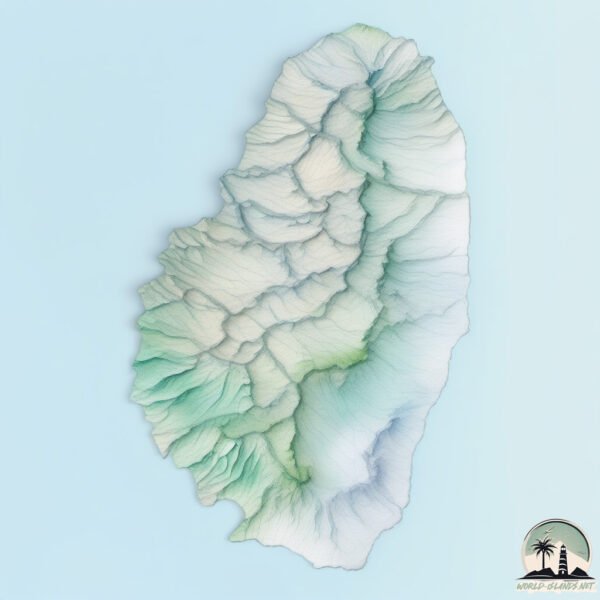St. Vincent

Welcome to St. Vincent, a Tropical island in the Caribbean Sea, part of the majestic Atlantic Ocean. This guide offers a comprehensive overview of what makes St. Vincent unique – from its geography and climate to its population, infrastructure, and beyond. Dive into the details:
- Geography and Size: Explore the island’s size and location.
- Climate and Weather: Weather patterns and temperature.
- Topography and Nature: Uncover the natural wonders of the island.
- Infrastructure and Travelling: Insights on reaching, staying, and making the most of your visit.
- News and Headlines: Latest News.
Geography and size of St. Vincent
Size: 346.4 km²
Coastline: 99 km
Ocean: Atlantic Ocean
Sea: Caribbean Sea
Continent: North America
St. Vincent is a Large Island spanning 346 km² with a coastline of 99 km.
Archipel: Lesser Antilles – A long arc of small islands in the Caribbean Sea, stretching from the Virgin Islands to Trinidad, known for their distinct cultures and tropical landscapes.
Tectonic Plate: Caribbean – Covering the Caribbean Sea and surrounding regions, this plate is bordered by the North American Plate and the South American Plate. Known for seismic activity, including earthquakes and volcanic eruptions, and features like the Puerto Rico Trench.
The geographic heart of the island is pinpointed at these coordinates:
Latitude: 13.25158147 / Longitude: -61.18927694
Climate and weather of St. Vincent
Climate Zone: Tropical
Climate Details: Tropical Rainforest Climate
Temperature: Hot
Climate Characteristics: This climate is typified by heavy rainfall throughout the year, high humidity, and consistently high temperatures, leading to lush rainforests and rich biodiversity. Seasonal temperature variations are minimal.
Topography and nature of St. Vincent
Timezone: UTC-04:00
Timezone places: America/La_Paz
Max. Elevation: 1082 m
Mean Elevation: 325 m
Vegetation: Evergreen Broadleaf Forest
Tree Coverage: 58%
The mean elevation is 325 m. The highest elevation on the island reaches approximately 1082 meters above sea level. The island is characterized by Mountains: High, steeply elevated landforms. Characterized by both a high maximum elevation (over 500 meters) and a high mean elevation, creating rugged, mountainous terrains on islands.
Dominating Vegetation: Evergreen Broadleaf Forest
Characterized by dense, lush canopies of broadleaf trees that retain their leaves year-round. These forests are typically found in tropical and subtropical regions and are known for their high biodiversity. St. Vincent has a tree cover of 58 %.
Vegetation: 13 vegetation zones – Exceptionally Diverse Island
Islands with more than ten vegetation zones are among the most ecologically rich and varied in the world. These islands are akin to miniature continents, boasting an incredible array of ecosystems. The sheer range of habitats, from high peaks to deep valleys, rainforests to deserts, creates a mosaic of life that is unparalleled. They are crucial for conservation and ecological studies.
Infrastructure and Travelling to St. Vincent
Does the island have a public airport? yes.
St. Vincent has a public and scheduled airport. The following airports are located on this island: Argyle International Airport.
Does the island have a major port? no.
There are no major ports on St. Vincent. The closest major port is KINGSTOWN, approximately 1 km away.
The mean population of St. Vincent is 276 per km². St. Vincent is Moderately Inhabited. The island belongs to Saint Vincent and the Grenadines.
The name of the island resonates across different cultures and languages. Here is how it is known around the world: Arabic: سانت فينسنت; German: St. Vincent; Spanish: Isla de San Vicente; French: Saint-Vincent; Portuguese: Ilha de São Vicente; Russian: Сент-Винсент; Chinese: 圣文森特岛
Continuing your journey, Bequia is the next notable island, situated merely km away.
9 TOP Things to Do in Saint Vincent and the Grenadines (& Places to Visit)



Saint Vincent and the Grenadines is classified as Developing region: Regions characterized by lower income levels, with economies in the process of industrialization and modernization. The level of income is Upper middle income.
News – Latest Updates and Headlines from St. Vincent
Stay informed with the most recent news and important headlines from St. Vincent. Here’s a roundup of the latest developments.
Please note: The data used here has been primarily extracted from satellite readings. Deviations from exact values may occur, particularly regarding the height of elevations and population density. Land area and coastline measurements refer to average values at mean high tide.
